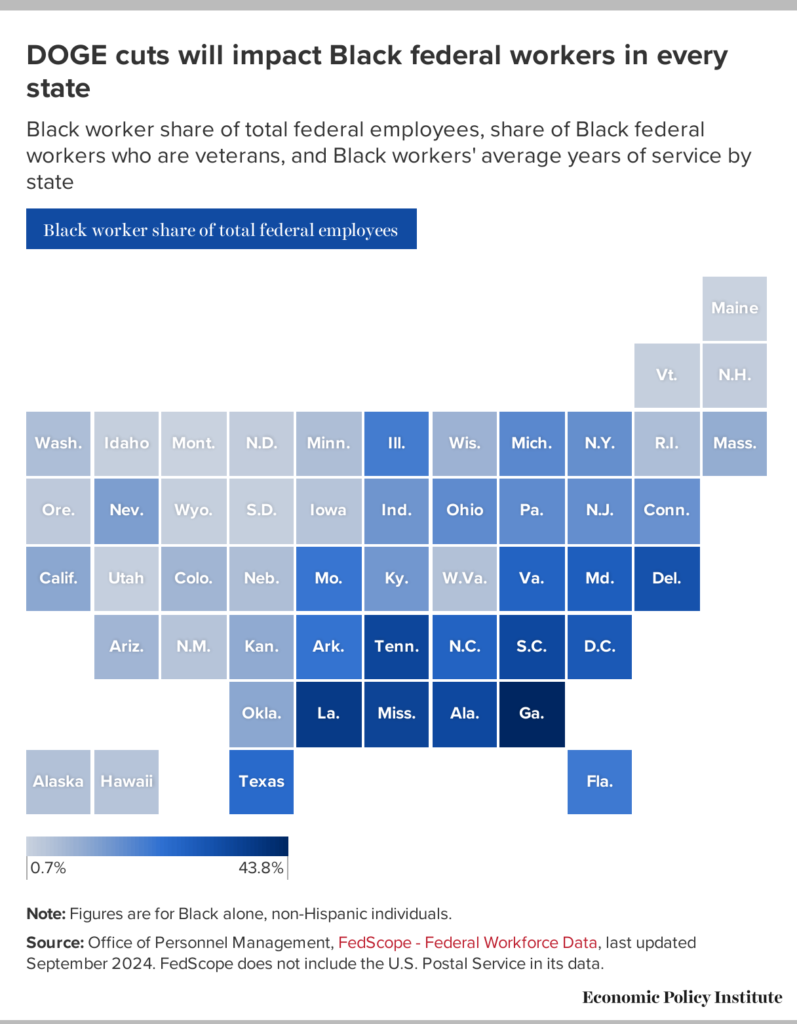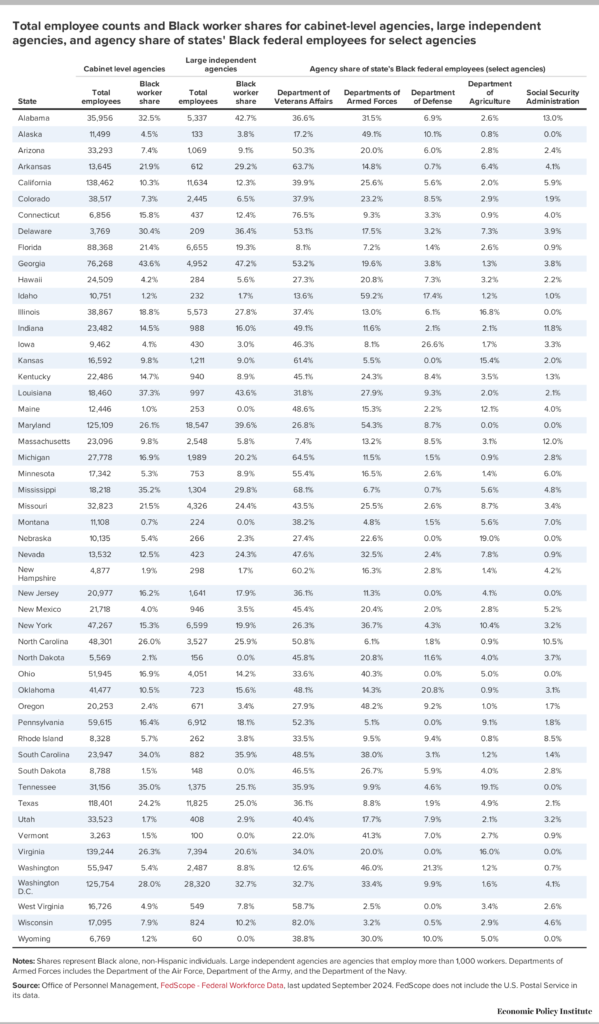April 15, 2025 Story by: Publisher
Among the most harmful actions taken by the Trump Administration have been DOGE’s cuts to the federal workforce. Though much of the attention has been on D.C.-based federal workers, over 90% of federal workers are employed outside the nation’s capital.
The ripple effects from large-scale job cuts are expected to show up in higher unemployment and the disruption of critical public services and government functions throughout the nation.
For Black Americans, public sector employment has historically provided a pathway to better, more equitable job opportunities for skilled and often highly educated Black workers compared with available private-sector jobs.
This fact sheet gives a snapshot of Black federal workers in each state (excluding USPS employees), offering context for the potential impact planned agency cuts—particularly at the Department of Veterans Affairs (up to 80,900 cut jobs), Social Security Administration (about 7,000), and civilian employees at the Department of Defense (up to 39,000)—could have on Black workers across the country.
DOGE Cuts

Figure A presents the Black worker share of each state’s federal employees (excluding USPS) along with the share who are veterans and their average years of employment in the federal government. While 18.7% of all federal workers are Black, they account for at least one-fifth of the state’s federal workforce in 15 states and the District of Columbia. The Black worker share of state federal employment is highest in Georgia (43.8%), Louisiana (37.6%), Mississippi (34.8%), and Tennessee (34.6%).
Total employee count
Black federal workers average 10 or more years of service in 36 states and the District of Columbia. Black workers in D.C. (16.4 years) and Maryland (15.3) have the longest average tenure in federal employment, reflecting a commitment to non-political career service across various agency headquarters. Nationally, Black federal workers average 12.3 years of service.

Figure B provides a breakdown of each state’s agency-level employment. Cabinet-level agencies employ the largest number of workers in each state. These include the 15 executive departments that advise the President, including the Departments of Labor, Justice, State, Treasury, Health and Human Services, Education, and Transportation. The second largest federal employers are large independent agencies existing outside of the executive branch and that were (until recently) intended to be independent of presidential control, such as the U.S. Agency for International Development, Equal Employment Opportunity Commission, Environmental Protection Agency, and Federal Reserve.
The largest cabinet-level employers in each state are related to the military, including the Department of Veterans Affairs, armed forces (i.e., Departments of the Air Force, Army, and Navy), and the Department of Defense.
The nature of these agencies (along with veterans’ preference policies for federal employment) contribute to the high percentage of veterans employed with the federal government. As veterans, 29.5% of Black federal workers have continued to serve the country beyond their time in the U.S. armed forces. In 27 states, more than 30% of Black federal workers are veterans (Figure A).
Along with defense-related agencies, the U.S. Department of Agriculture and the Social Security Administration have a presence in nearly every state and collectively employ most of each state’s Black federal workers.
The 15 states where Black workers are at least one-fifth of the state’s federal workforce are Illinois, Florida, Missouri, Arkansas, Texas, North Carolina, Virginia, Maryland, Delaware, Alabama, South Carolina, Tennessee, Mississippi, Louisiana, and Georgia.
Source: Economic Policy Institute

















